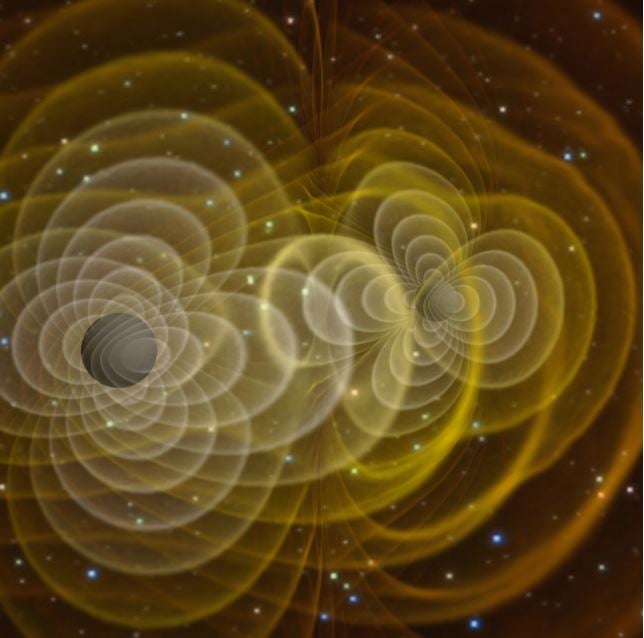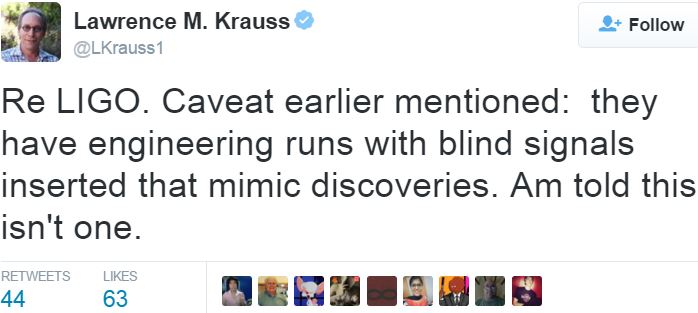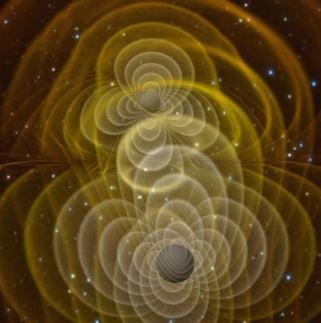Gravitational waves – ripples that carry energy across the universe that bend spacetime – may have been found, so says an eminent physicist, whose rumour has triggered others, which have sent the whole world of physics into a frenzy.
Gravitational waves, seen as one of astronomy’s holy grails, are ripples in spacetime by any particle or object that has a mass. They were predicted by the German-born theoretical physicist Albert Einstein (1879-1955) in 1916 – exactly 100 years ago – on the basis of his Theory of General Relativity.
Theoretical physicists believe sources of detectable gravitational waves might possibly include binary star systems consisting of white dwarfs, neutron stars or black holes. However, nobody has yet found a way to detect them.
 This tweet by Prof. Krauss probably stopped every single physicist in the world in his/her tracks. (Image: twitter.com/LKrauss1)
This tweet by Prof. Krauss probably stopped every single physicist in the world in his/her tracks. (Image: twitter.com/LKrauss1)
Rumours, which have been wizzing around online since ‘something’ was detected in September last year, have today come to a head.
Analysis of what was detected in September 2015 is still underway. Everybody is talking about an announcement soon.
Excitement after Prof. Krauss’ tweet
Excitement rocketed when theoretical physicist and cosmologist, Lawrence M Krauss, Foundation Professor of the School of Earth and Space Exploration at Arizona State University, and also director of its Origins Project, announced on Twitter that someone had told him that gravitational waves had been confirmed, and that an announcement was imminent.
The discovery would have come from LIGO (Advanced Laser Interferometer Gravitational-Wave Observatory). Its system uses detectors to look specifically for gravitational waves.
If they really have been found, they could offer a novel way of looking at the Universe. Knowing what they are and being able to detect them could offer a way of observing ultra-distant and exotic parts of the Universe.
 3D visualization of gravitational waves produced by 2 orbiting black holes. (Image: ligo.org. Credit: Henze, NASA)
3D visualization of gravitational waves produced by 2 orbiting black holes. (Image: ligo.org. Credit: Henze, NASA)
Einstein predicted 100 years ago that gravitational waves exist. Since then, work has proven that they nearly certainly do. However, there is no cast-iron, absolute, ultra-compelling proof. That is, until now – so Prof. Krauss tells us.
Be ready for some mud-slinging and scientist-rivalry over coming days and weeks. Scientists, like athletes, can be bitterly competitive and dislike being beaten by others to the finishing line.
Michael Merrifield, Professor of Astronomy at the University of Nottingham’s Faculty of Science, warned Prof. Krauss with the following tweet regarding the discovery:
”If true, you are trying to steal their glory; if false, you are damaging scientific credibility. A bit of a no-win really.”
 In a later tweet, Prof. Kraus informs us that no deliberate signals have been fed into the system this time. (Image: twitter.com/LKrauss1)
In a later tweet, Prof. Kraus informs us that no deliberate signals have been fed into the system this time. (Image: twitter.com/LKrauss1)
Prof. Kraus responded that he did not see where the glory was in alerting people to a possible discovery. He added that if there really has been a discovery “they will deservedly get glory.”
The whole thing could be a false alarm
Whatever was detected could have been sent out deliberately to be tested, i.e. fed into the system as part of a test.
The scientists at the observatory have in the past fed in signals to the data, the aim being to check whether they had the ability to detect them.
This happened publicly in 2010. Everybody got super-excited for the same reason as now – scientists said they had seen two dead stars making a black hole, and were writing about it for a paper that would be published in an academic journal.
A large conference was convened, during which the scientists who had fed in the false signals told the researchers who thought they had detected something. They had fed in the false data as a scientific equivalent to a fire drill, i.e. checking that the system was effective at detecting what they were seeking.
 An artist’s depiction of Albert Einstein surfing on his gravitational waves. (Image: esa.int. Credit: Max Planck Intitute Hanovre)
An artist’s depiction of Albert Einstein surfing on his gravitational waves. (Image: esa.int. Credit: Max Planck Intitute Hanovre)
In a follow-up tweet, Prof. Krauss assured that there was no testing taking place this time. If what was detected is confirmed – this is probably the real thing.
Production of a gravitational wave
Generally, any acceleration that is not cylindrically or spherically symmetric will produce a gravitational wave.
When a star goes supernova (increases greatly in brightness because of a catastrophic explosion that ejects most of its mass), this explosion will produce gravitational waves if the mass isn’t ejected in a spherically symmetric way, although the mass’ centre may be in the same position before and after the explosion.
A spinning star is another example. A perfectly spherical star does not produce a gravitational wave, but a lumpy star does.
According to the LIGO Scientific Collaboration, the gravitational waves that current detectors are sensitive to would be in the audible frequency range if they were sound waves. Imagine them as ‘gravitational wave radios’, LIGO researchers say.
In the same way we cannot hear radio waves without a radio to detect the waves and decode the music signal to send to the speakers, gravitational waves cannot be ‘heard’ if there is no detector to distinguish the gravitational wave and send that signal to the speakers.
All the physics involved in the production of a gravitational wave is encoded into a type of ‘music’ for physicists to decode. Listen to this example signal of two neutron stars merging.
Video – What are gravitational waves?
This video talks about what gravitational waves actually are, what produces them, and some of their properties.

